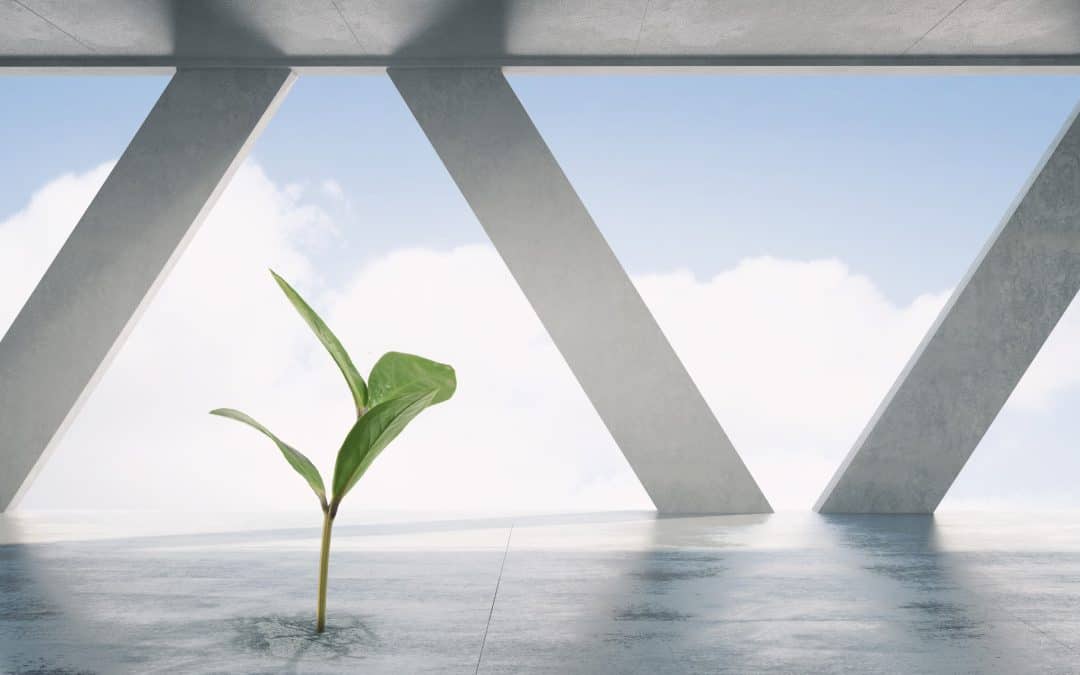As concerns over climate change grow, the construction industry is shifting towards greener alternatives. Concrete, one of the most used materials, is part of this change. While concrete is durable, its production contributes heavily to carbon emissions. Luckily, there are new solutions to make it more sustainable. In this article, we’ll explore top trends in sustainable concrete solutions that are reshaping construction and benefiting the environment.
1. Green Concrete: The Eco-Friendly Game Changer
One of the leading top trends in sustainable concrete solutions is green concrete. Green concrete uses eco-friendly materials and processes to lower its carbon footprint. Traditional concrete relies on cement, which requires lots of energy to produce. Green concrete, however, incorporates industrial waste products like fly ash, slag, and silica fume.
Using these materials reduces reliance on cement and repurposes waste that would otherwise go to landfills. Green concrete can reduce CO2 emissions by up to 30%, making it an excellent choice for homeowners wanting to reduce their environmental impact.
Additionally, green concrete requires less water than traditional concrete, helping conserve resources. Green concrete is quickly becoming a top choice for sustainable building. From driveways to patios, this eco-friendly option delivers durability while shrinking your environmental footprint.
2. Carbon-Capture Technology in Concrete
Another exciting trend in sustainable concrete is carbon-capture technology. Researchers are finding ways to trap CO2 within the concrete itself. This process not only reduces CO2 released during production, but it also removes carbon from the atmosphere.
Companies like CarbonCure embed captured CO2 into fresh concrete during the mixing process. The CO2 then mineralizes, becoming permanently trapped in the concrete without affecting its strength.
Carbon-capture technology is one of the top trends in sustainable concrete solutions. It addresses environmental concerns while keeping concrete’s performance intact. This innovation holds great promise for cutting the construction industry’s carbon footprint.
3. Recycled Aggregates in Concrete Mixes
Recycling is a growing trend in the construction industry, and concrete is part of that. Another key sustainable concrete trend is the use of recycled aggregates. These materials, like crushed concrete, glass, or brick, come from demolished structures. Instead of using virgin materials, builders can now create concrete mixes using these recycled aggregates.
Recycled aggregate concrete reduces the need to mine new materials. It leads to fewer emissions and less environmental damage. Plus, it helps solve waste problems by keeping debris out of landfills. This process allows old, unusable concrete to be repurposed while saving natural resources.
For homeowners building or renovating, using recycled aggregates is an easy way to adopt sustainable practices. The resulting concrete is just as strong as traditional options but with a much smaller environmental impact. The rise of recycled aggregate concrete is one of the top trends in sustainable concrete solutions today.
4. Permeable Concrete for Water Management
Water conservation is also a priority in sustainability, and permeable concrete is helping. Traditional concrete surfaces, like driveways, don’t allow water to pass through. This leads to increased runoff and sometimes flooding. Permeable concrete, on the other hand, allows water to flow through and reduces runoff.
Permeable concrete uses a coarser aggregate with fewer fine materials, creating spaces for water to pass through. This makes it perfect for surfaces exposed to rainfall or near water sources. It’s especially useful in urban areas where managing stormwater is crucial.
Using permeable concrete in landscaping, patios, and driveways is a forward-thinking way to manage water. As water shortages and storms increase, permeable concrete is becoming one of the top trends in sustainable concrete solutions.
5. Self-Healing Concrete: The Future of Sustainability
Self-healing concrete, which repairs itself, is another exciting trend. It contains bacteria or capsules of healing agents that activate when cracks form. Once the crack appears, these agents fill the gap and prevent further damage.
Self-healing concrete significantly extends the lifespan of concrete structures. This reduces the need for repairs or replacements, conserving resources. As technology improves, self-healing concrete could transform how we maintain buildings and roads.
Given its ability to reduce waste and lower maintenance costs, self-healing concrete is one of the top trends in sustainable concrete solutions that is likely to grow.
Why Sustainable Concrete Solutions Matter
The construction industry has contributed to environmental issues like pollution and resource depletion. But the push for greener practices is inspiring new developments in concrete. By adopting these top trends in sustainable concrete solutions, homeowners and builders can reduce environmental impact without sacrificing quality.
Whether you’re building, renovating, or just seeking eco-friendly options, sustainable concrete offers many benefits. From green concrete to self-healing technology, the future of concrete is both bright and green. As these trends continue to grow, they will create positive changes for both the planet and the construction industry.
